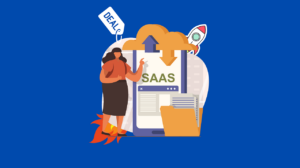When it comes to web development, companies have many options when choosing the right software development services for their needs. There are front-end developers, back-end developers and full-stack developers, which is mostly a combination of the two aforementioned coding methods.
How Front-End Development Contrasts with Back-End Development
Front-end developers focus on the visible part of the web that shows up when a user clicks on a page. They use programming languages such as HTML, Javascript and CSS. Site visitors are able to access content created in these languages via various browsers that interpret and present information.
This is in contrast to back-end development, which includes the stuff you hardly notice or see unless you are a back-end developer or are experienced in web optimization. The back-end refers to the databases and optimization processes in place that occur in the background while a website or web app is running. Back-end developers focus on speed and site responsiveness. Back-end languages include Python, Ruby, Ruby on Rails, .NET and PHP.
Client vs. Server Distinction
Another way to distinguish between front-end vs back-end development is that front-end development focuses on the client. Thus it is sometimes referred to as client-side development. On the other hand, back-end development refers to the server and is sometimes called server-side development.
The server and client work together to bring modern web sites to a computer screen. A user running a client computer clicks on a link to visit a web site. The web site sends a ping to a remote server where a database or other information is stored. The server then reflects this information to the client. Finally, the web site appears.
Many sites are built entirely in one or a combination of the three front-end development languages of HTML, Javascript and CSS. Some only use HTML, but the websites with effective, modern and interactive content that is also distinguishable from competitors and optimized will generally use all three. There are also services that have the back-end code running automatically as part of their package.
Now that we got the distinction out of the way, let us take a look at some skills that front-end developers should possess and bring to the table. The main thing they should know is the three front-end languages of HTML, CSS and Javascript. They should also have some familiarity with back-end development and a general-purpose language or two to be fully rounded out.
HTML in a Nutshell
Hypertext markup language, or HTML, is the language that makes up the majority of the visible web. It is a markup language where code is structured in a specific way and stored as text files.
Out of all three front-end languages, it is also the oldest. HTML5 is the latest version of this language and its capabilities dwarf those of its predecessors. It can embed video and offer limited interactivity among other features.
CSS in a Nutshell
Cascading style sheets or CSS is a front-end language used to describe the presentation of a website. The language is used to describe aspects of a web page such as color, overall layout and various fonts used. Its knowledge can be useful particularly if you want your web content to stand out in style and layout from others.
Javascript in a Nutshell
For greater interactivity like running games via browser or as web apps, Javascript is the language of choice. Javascript is also used to create forms that users fill out when visiting websites and other dynamic content.
It is a scripted language with object-oriented programming. Thus, it is easy to follow and read and can be learned relatively quickly. Keep in mind that Javascript has various frameworks that are also useful skills for developers.
General Purpose Languages Can Also Be Useful for the Front-End
Even though front-end developers specialize and should learn a combination of HTML, Javascript and CSS, they should at least be familiar with back-end roles. This way they understand what goes on under the hood when working alongside back-end developers and creating a wide range of content for the web.
There are also general-purpose languages such as Python, C or Java that are useful for any front-end as well as back-end developers. They are languages that can be used for both front-end and back-end tasks. This flexibility makes them useful to learn for front-end developers.
Other Front-End Development Tasks
Front end-developers focus on web design and creating web apps. There are also positions available for them in the user interface (UI) and user experience (UX) design. This is visually-focused content that users interact with when visiting a page or a web app. It requires dynamic content and the use of a combination of the languages above.
Today, more software than ever continues to be defined by web developers and accessed online. Standalone applications are giving way to web apps and SaaS services to users around the world. Front-end developers are making these apps and services possible and the need for quality development services has never been higher in this regard.




